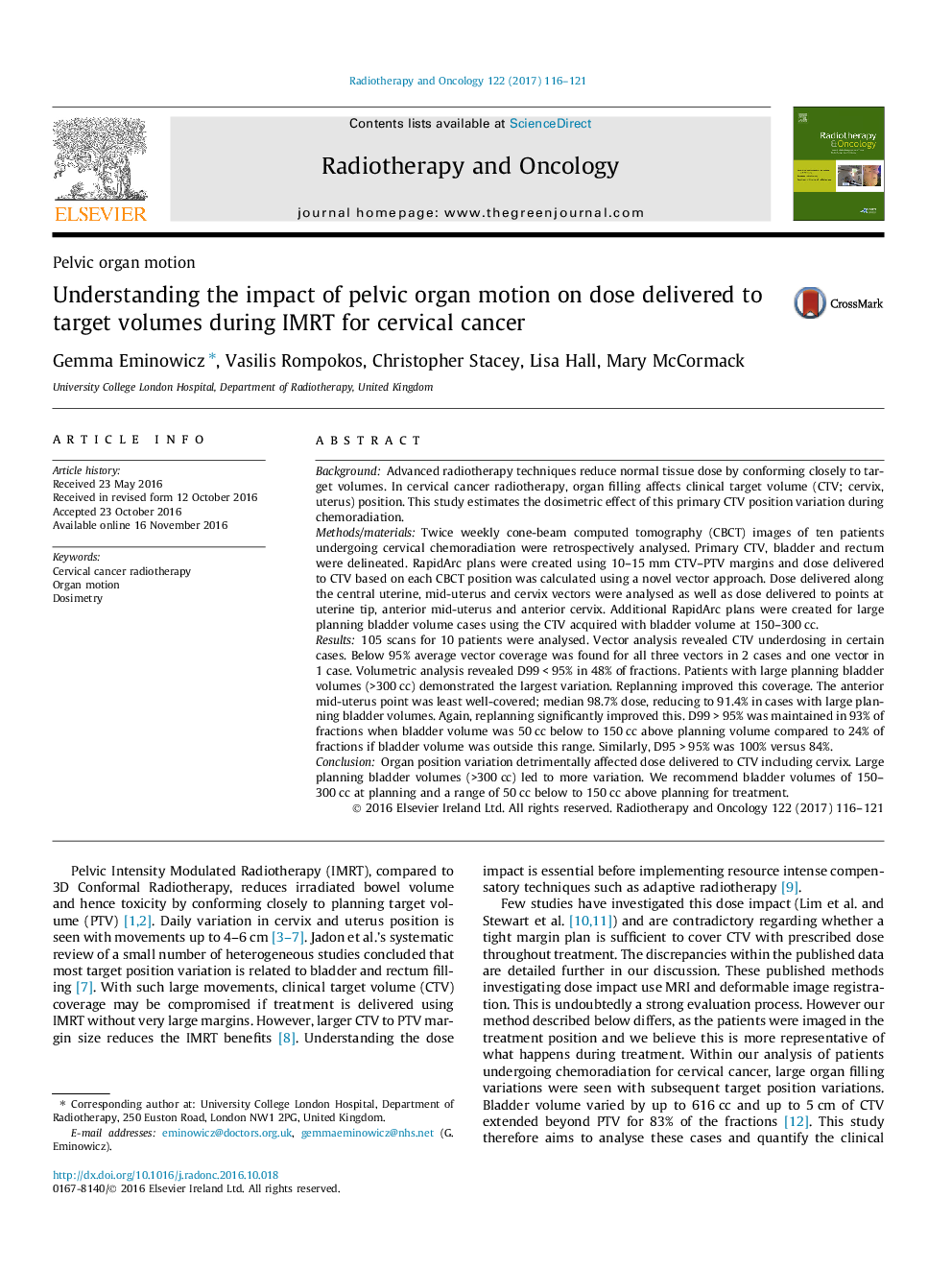| Article ID | Journal | Published Year | Pages | File Type |
|---|---|---|---|---|
| 5529743 | Radiotherapy and Oncology | 2017 | 6 Pages |
BackgroundAdvanced radiotherapy techniques reduce normal tissue dose by conforming closely to target volumes. In cervical cancer radiotherapy, organ filling affects clinical target volume (CTV; cervix, uterus) position. This study estimates the dosimetric effect of this primary CTV position variation during chemoradiation.Methods/materialsTwice weekly cone-beam computed tomography (CBCT) images of ten patients undergoing cervical chemoradiation were retrospectively analysed. Primary CTV, bladder and rectum were delineated. RapidArc plans were created using 10-15Â mm CTV-PTV margins and dose delivered to CTV based on each CBCT position was calculated using a novel vector approach. Dose delivered along the central uterine, mid-uterus and cervix vectors were analysed as well as dose delivered to points at uterine tip, anterior mid-uterus and anterior cervix. Additional RapidArc plans were created for large planning bladder volume cases using the CTV acquired with bladder volume at 150-300Â cc.Results105 scans for 10 patients were analysed. Vector analysis revealed CTV underdosing in certain cases. Below 95% average vector coverage was found for all three vectors in 2 cases and one vector in 1 case. Volumetric analysis revealed D99Â <Â 95% in 48% of fractions. Patients with large planning bladder volumes (>300Â cc) demonstrated the largest variation. Replanning improved this coverage. The anterior mid-uterus point was least well-covered; median 98.7% dose, reducing to 91.4% in cases with large planning bladder volumes. Again, replanning significantly improved this. D99Â >Â 95% was maintained in 93% of fractions when bladder volume was 50Â cc below to 150Â cc above planning volume compared to 24% of fractions if bladder volume was outside this range. Similarly, D95Â >Â 95% was 100% versus 84%.ConclusionOrgan position variation detrimentally affected dose delivered to CTV including cervix. Large planning bladder volumes (>300Â cc) led to more variation. We recommend bladder volumes of 150-300Â cc at planning and a range of 50Â cc below to 150Â cc above planning for treatment.
